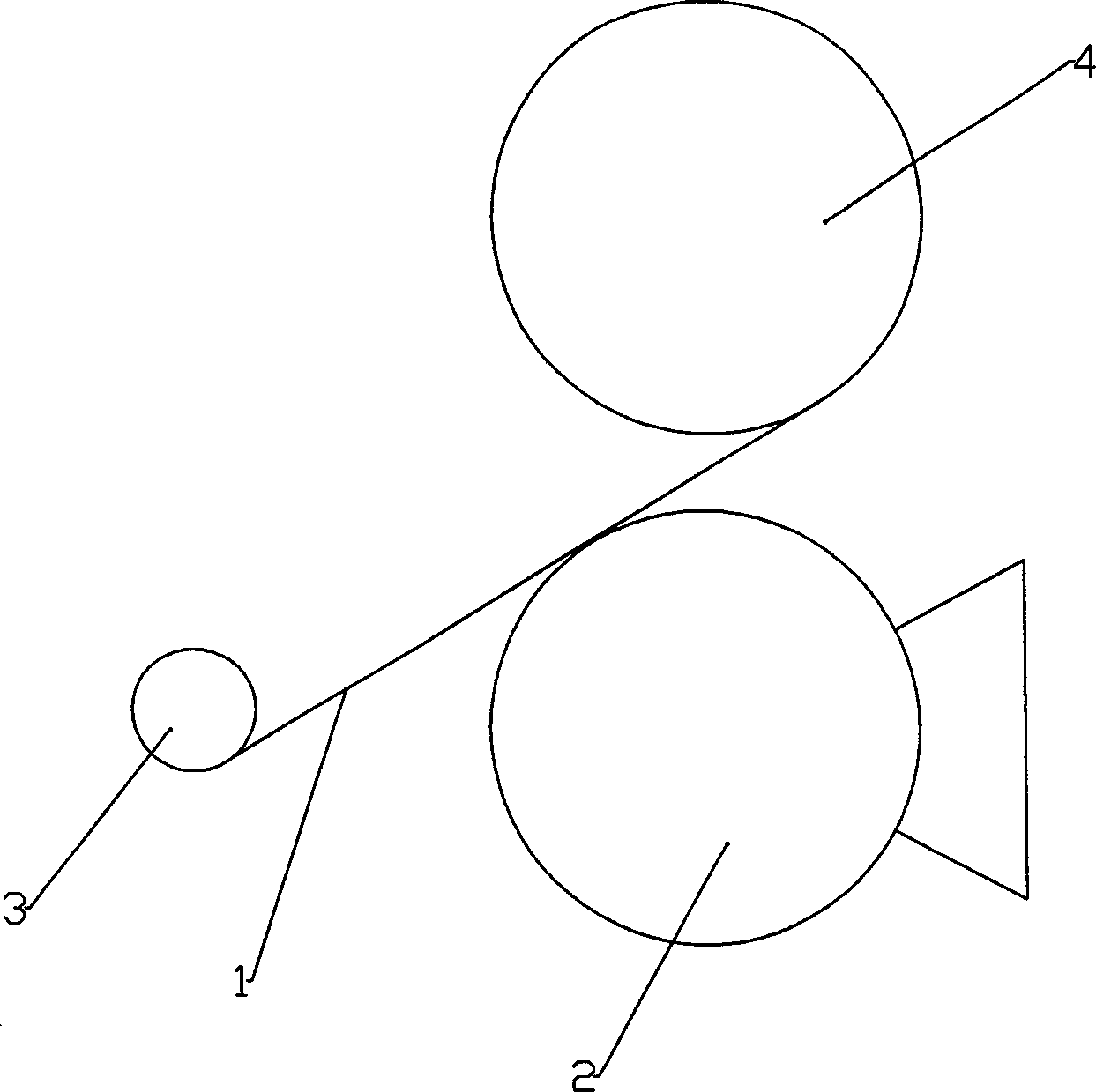Acrylic acid coating film and its manufacturing method
A manufacturing method and acrylic technology, applied in the field of high-transparency packaging films and coating films, can solve the problems of unsuitable high-speed packaging equipment packaging, composite materials are not easy to degrade, and the thickness of the composite layer is large, and achieve excellent packaging adaptability and excellent low temperature. Heat-sealing performance, the effect of reducing the manufacturing cost
- Summary
- Abstract
- Description
- Claims
- Application Information
AI Technical Summary
Problems solved by technology
Method used
Image
Examples
Embodiment 1
[0034] The raw materials used are:
[0035] Substrate: Biaxially oriented polypropylene (BOPP), 18 μm thick.
[0036] Acrylic acid emulsion: 200kg of acrylic acid emulsion formed by copolymerization of 70% acrylic acid and 30% acrylic acid methyl obtained on the market, its solid content is 30%;
[0037] Demineralized water: self-made, 70kg;
[0038] Slip agent: commercially available palm wax slip agent 10kg;
[0039] Anti-blocking agent: commercially available silicon dioxide anti-blocking agent 1kg;
[0040] Primer: Commercially available solvent-based polyurethane.
[0041] Weigh 200kg of acrylic emulsion and add it into a stainless steel container, then add 10kg of palm wax slip agent, 1kg of silicon dioxide anti-adhesive agent and 70kg of soft water in turn while stirring, and stir well to form an acrylic paint, which will be used in the next process.
[0042] Unwind the biaxially oriented polypropylene (BOPP) base material as the base material and perform corona tre...
Embodiment 2
[0045] The raw materials used are:
[0046] Substrate layer: Biaxially oriented polypropylene (BOPP) with a thickness of 200 μm.
[0047] Acrylic acid emulsion: 300kg of acrylic acid emulsion formed by copolymerization of 10% acrylic acid and 90% acrylate methyl obtained on the market, its solid content is 16%;
[0048] Slip agent: commercially available palm wax slip agent 15kg;
[0049] Anti-blocking agent: 1.6kg of commercially available silicon dioxide anti-blocking agent;
[0050] Primer: Commercially available water-based acrylic adhesive.
[0051] Weigh 300kg of acrylic emulsion and add it into a stainless steel container, then add about 15kg of palm wax slip agent and 1.6kg of silicon dioxide anti-sticking agent in sequence while stirring, and wait for the next process after stirring evenly.
[0052] The biaxially oriented polypropylene (BOPP) substrate used as the substrate is unwound and then corona treated, and the primer is pre-coated, and the coating amount of ...
Embodiment 3
[0054] The raw materials used are:
[0055] Substrate layer: PET film with a thickness of 10 μm.
[0056] Acrylic emulsion: 100kg of acrylic emulsion copolymerized by 80% acrylic acid and 20% ethyl acrylate, with a solid content of 45%;
[0057] Palm wax slippery agent 40kg, commercially available;
[0058] Silica anti-sticking agent 10kg, commercially available;
[0059] Soft water 250kg.
[0060] Primer: solvent-based polyurethane, commercially available.
[0061] Weigh 100kg of acrylic emulsion and add it to a stainless steel container, then add about 40kg of slip agent, 10kg of anti-adhesive agent and 250kg of soft water while stirring, and stir well to form an acrylic paint for use in the next process.
[0062] Corona treatment is carried out after unwinding the PET film as the substrate; pre-coating solvent-based polyurethane primer on one side of the substrate, and the coating amount is 0.8g / m 2 , and then evenly transfer the acrylic paint to the substrate film coa...
PUM
| Property | Measurement | Unit |
|---|---|---|
| thickness | aaaaa | aaaaa |
| thickness | aaaaa | aaaaa |
| thickness | aaaaa | aaaaa |
Abstract
Description
Claims
Application Information
 Login to View More
Login to View More - R&D
- Intellectual Property
- Life Sciences
- Materials
- Tech Scout
- Unparalleled Data Quality
- Higher Quality Content
- 60% Fewer Hallucinations
Browse by: Latest US Patents, China's latest patents, Technical Efficacy Thesaurus, Application Domain, Technology Topic, Popular Technical Reports.
© 2025 PatSnap. All rights reserved.Legal|Privacy policy|Modern Slavery Act Transparency Statement|Sitemap|About US| Contact US: help@patsnap.com

